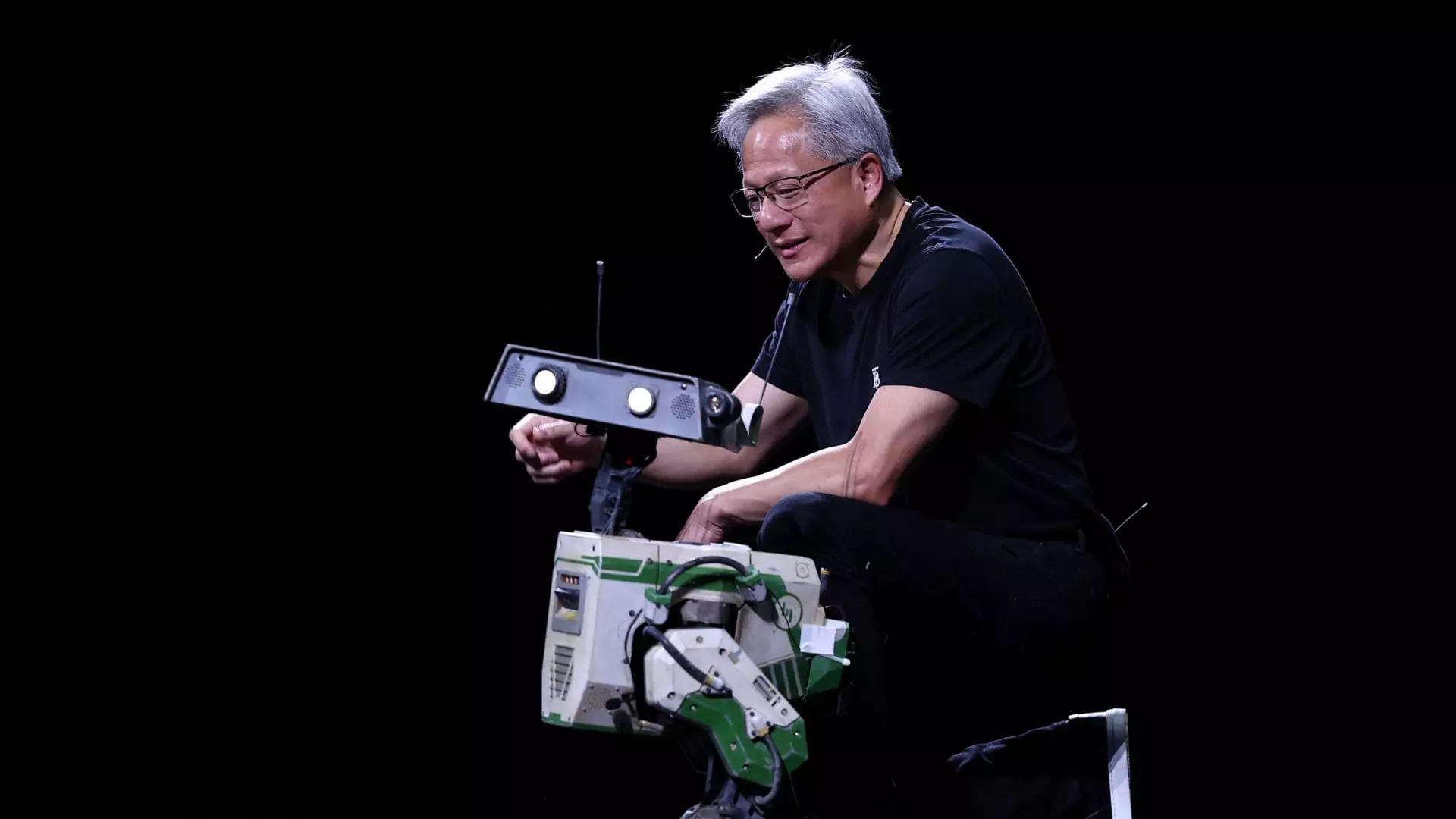In a recent statement that reverberated through the technology sector, Jensen Huang, the dynamic CEO of Nvidia, articulated a vision that positions robotics as a core component of the company’s growth strategy, particularly in tandem with artificial intelligence. At Nvidia’s annual shareholders meeting, Huang emphasized that beyond AI, robotics poses a formidable opportunity, primarily through their integration into self-driving vehicles. The potential here is not just significant; it is monumental, spanning a multitrillion-dollar landscape. This outlook is notable, especially considering that only a year prior, Nvidia revamped its business structure to highlight both automotive and robotics under a single unit, indicating a strategic pivot towards these transformative technologies.
The Shocking Surge: Impressive Financial Metrics
Nvidia’s recent financial performance is a testament to its robust market positioning and the surging demand for data center graphics processing units (GPUs). These GPUs are the backbone of advanced AI applications, driving functionalities that power innovations such as OpenAI’s ChatGPT. In the fiscal year ending 2023, Nvidia’s sales skyrocketed from $27 billion to a staggering $130.5 billion, with forecasts suggesting a near doubling to $200 billion for the current year. These figures not only underscore Nvidia’s prowess in AI technology but also suggest that the burgeoning market for robotics is likely to follow suit.
Importantly, the automotive and robotics division showcased a phenomenal growth of 72% year-over-year, with quarterly sales peaking at $567 million. Although this represents a mere 1% of Nvidia’s total revenue, it is essential to recognize the trajectory: the growth potential is enormous, and this division could very well serve as the bedrock for future profitability. Huang’s statements about the ongoing evolution of Nvidia’s brand—from a chip-centric focus to a comprehensive “AI infrastructure” provider—signal a readiness to pivot and capitalize on emerging technologies.
Driving Change: The Role of Self-Driving Vehicles
Self-driving vehicles represent not just a breakthrough in transportation but a critical application of Nvidia’s advanced chip technology. Huang pointed to the company’s Drive platform, utilized by industry giants like Mercedes-Benz, as a pivotal element in this landscape. The automotive industry is on the cusp of a revolution, and Nvidia is positioning itself as the key enabler of this shift, creating the computational backbone necessary for autonomous driving.
Huang’s vision extends beyond mere vehicles; he anticipates a world in which robotic automation will permeate every aspect of industry and daily life. The mention of “billions of robots” and “hundreds of thousands of robotic factories” powered by Nvidia technology is particularly compelling. As businesses seek greater efficiency and productivity, the need for sophisticated robotic integration becomes undeniable, marking a significant turning point for industries worldwide.
The Expanding Ecosystem: Beyond Chips to Software and Cloud Services
Crucially, Huang’s insights illustrate that Nvidia is increasingly about more than just hardware. The suite of products surrounding its chips—complementary technologies such as software, cloud services, and networking solutions—positions the company as a holistic provider of AI solutions. This approach encourages collaboration across sectors, ensuring that industries can seamlessly integrate Nvidia’s technologies into their operations. Huang’s assertion that the company has “stopped thinking of ourselves as a chip company” reinforces the shifting paradigm within Nvidia. It reflects a broader industry trend where companies must adapt and innovate to maintain relevance in an ever-evolving technology landscape.
Additionally, Nvidia’s recent introductions, such as AI models for humanoid robots, indicate a decisive step toward democratizing robotics technologies, making them more accessible and functional in various applications. The vision for an AI-powered robotic future isn’t just ambitious; it’s a reflection of the direction in which the tech industry is heading, further propelling Nvidia into a leadership role.
The implications of Huang’s statements extend well beyond financial metrics. They prompt consideration of how technology will shape societal structures, industries, and ultimately, the nature of work itself. Whether it is self-driving cars fundamentally changing transportation or AI-driven robots enhancing manufacturing efficiency, Nvidia’s ambitions are redefining the landscape of modern technology, holding the promise of a transformative future.

